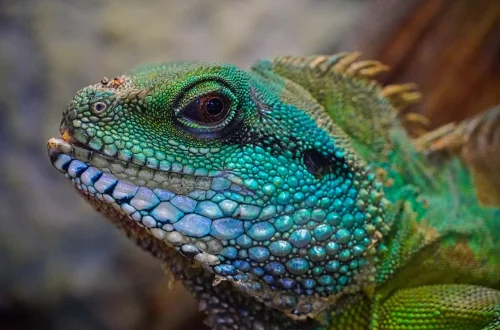
The Ultimate Guide to Choosing the Best Mouser Cat Food
Choosing the right food for your mouser cat is a decision that can significantly impact their overall health and well-being. With so many options available on the market today, it can be overwhelming for cat owners to navigate the landscape of feline nutrition. Cats, being obligate carnivores, have specific dietary needs that must be met to ensure they thrive. This means that the food you select should not only be palatable but also rich in the necessary nutrients that support their active lifestyle, especially for those that take on the role of hunters.
Moreover, a cat’s dietary requirements can change over time due to age, health conditions, or lifestyle changes. It’s crucial to consider these factors when selecting cat food. Are you searching for dry kibble, wet food, or a mix of both? Each type has its benefits and drawbacks, and understanding these can help you make a more informed decision. Furthermore, the ingredients in cat food can vary widely, from high-quality protein sources to fillers that may not provide much nutritional value.
Ultimately, the goal is to find a food that not only satisfies your cat’s taste buds but also supports their health and vitality. In this guide, we will explore the key factors to consider when choosing the best mouser cat food, ensuring you have all the information you need to make the right choice for your feline friend.
Understanding Your Cat’s Nutritional Needs
To choose the best food for your mouser cat, it is essential to understand their unique nutritional needs. Cats are obligate carnivores, which means their diet must primarily consist of meat. Unlike dogs, who are omnivores, cats require certain nutrients that are only found in animal tissues. This includes essential amino acids like taurine, which is crucial for heart health, vision, and reproductive functions.
Protein is the cornerstone of a cat’s diet. High-quality protein sources such as chicken, beef, or fish should be the first ingredient on the label of any cat food you consider. Look for brands that specify the source of protein—whole meats are preferable over meat by-products, which can be lower in quality and nutritional value.
Fats are another critical component of a cat’s diet. They provide energy and help absorb fat-soluble vitamins. Omega-3 and Omega-6 fatty acids are essential for maintaining healthy skin and a shiny coat. These fats can be found in fish oils or chicken fat, and including them in your cat’s diet can improve their overall health.
Carbohydrates are less critical for cats, but they can still play a role in their diet. While cats do not require carbs, some sources can provide energy and fiber. However, it is essential to ensure that the carbohydrate content does not exceed a certain threshold, as too many carbs can lead to obesity and other health problems. Ideally, the food should contain a mix of high-quality protein, healthy fats, and minimal carbohydrates.
Lastly, don’t overlook the importance of hydration. Cats are prone to urinary tract issues, and a diet that includes wet food can help ensure they are adequately hydrated. If your cat prefers dry kibble, make sure they have constant access to fresh water.
Evaluating Ingredients and Labels
When selecting the best mouser cat food, it’s vital to become familiar with reading labels and understanding the ingredients. The first step is to look for a statement from the Association of American Feed Control Officials (AAFCO), which indicates that the food meets certain nutritional standards. This can give you confidence that the product has been formulated to provide a balanced diet for your cat.
The ingredient list will provide insight into the quality of the food. Start by checking the first few ingredients, as these make up the bulk of the product. Ideally, the first ingredient should be a named protein source, such as “chicken” or “salmon.” Avoid foods that list generic terms like “meat” or “meat meal,” as these can be made from lower-quality sources.
It’s also important to be aware of fillers and artificial additives. Ingredients like corn, wheat, and soy are often used as fillers and provide little nutritional value. While some cats can tolerate these ingredients, they are not necessary for a healthy diet. Instead, look for whole grains like brown rice or healthy vegetables that can offer fiber and other nutrients.
Another aspect to consider is the presence of preservatives. Natural preservatives, such as tocopherols (vitamin E) or ascorbic acid (vitamin C), are preferable to artificial ones, as they are generally safer for your cat. Additionally, if your cat has specific dietary restrictions or allergies, always check for potential allergens in the ingredient list.
Lastly, it’s wise to consider the reputation of the brand you choose. Researching the company’s history, their manufacturing processes, and customer reviews can provide valuable insights into the quality and safety of their products.
Wet Food vs. Dry Food: Choosing the Right Type
The debate between wet food and dry food for cats is ongoing, and both options have their advantages and disadvantages. Understanding these can help you make an informed decision that aligns with your cat’s needs and preferences.
Wet food is often favored for its moisture content, which can aid in hydration. Since many cats do not drink enough water, incorporating wet food into their diet can help prevent urinary tract issues and promote overall kidney health. Additionally, wet food tends to be more palatable for cats, which can be a significant factor if you have a picky eater. It usually contains higher protein content and fewer carbohydrates, making it a good choice for active mouser cats.
On the downside, wet food can be more expensive than dry food, and it has a shorter shelf life once opened. If you opt for wet food, you may need to store leftovers in the refrigerator and consume them within a few days. Moreover, some cat owners find that wet food can lead to dental issues, as it does not provide the abrasive action needed to clean teeth like dry kibble does.
Dry food, on the other hand, is convenient and often more affordable. It can be left out for longer periods without spoiling, making it a practical option for busy cat owners. Additionally, some dry foods are formulated to support dental health by reducing plaque buildup as cats chew.
However, dry food typically has a lower moisture content, which means it’s essential to ensure that your cat is drinking enough water. Some cats may also be more prone to weight gain on a dry food diet, especially if they are free-fed.
Ultimately, the choice between wet and dry food may depend on your cat’s individual preferences and health needs. Some cat owners choose to offer a combination of both, providing the benefits of each type while keeping their feline friend happy and well-nourished.
Special Considerations for Mouser Cats
Mouser cats, often more active than their indoor counterparts, require special attention when it comes to their diet. Their energy expenditure is typically higher due to their hunting and exploratory behaviors, necessitating a food that supports their active lifestyle.
When selecting food for a mouser cat, consider the calorie content. Active cats often require more calories than sedentary ones. Look for formulas that are specifically designed for active or athletic cats, which will have higher protein and fat content to sustain their energy levels.
Additionally, consider the life stage of your cat. Kittens, adults, and senior cats have differing nutritional requirements. Kittens need a diet rich in protein and fat to support their growth and development, while senior cats may benefit from food that is lower in calories and enriched with joint-supporting nutrients.
If your mouser cat has specific health concerns, such as obesity or diabetes, consult your veterinarian for recommendations tailored to their needs. Some cat foods are formulated to address specific health issues, and your vet can help you choose the best option.
Lastly, keep in mind that mouser cats may also have unique preferences in taste and texture. Experimenting with different brands and formulations can help you find the right fit for your cat’s palate.
In conclusion, choosing the best mouser cat food is a crucial step in ensuring your feline friend’s health and happiness. By understanding their nutritional needs, evaluating ingredients, and considering the type of food that best suits their lifestyle, you can make an informed decision that supports their well-being.
**Disclaimer:** This article is for informational purposes only and is not intended as medical advice. Always consult a veterinarian for health concerns or dietary recommendations for your pet.




